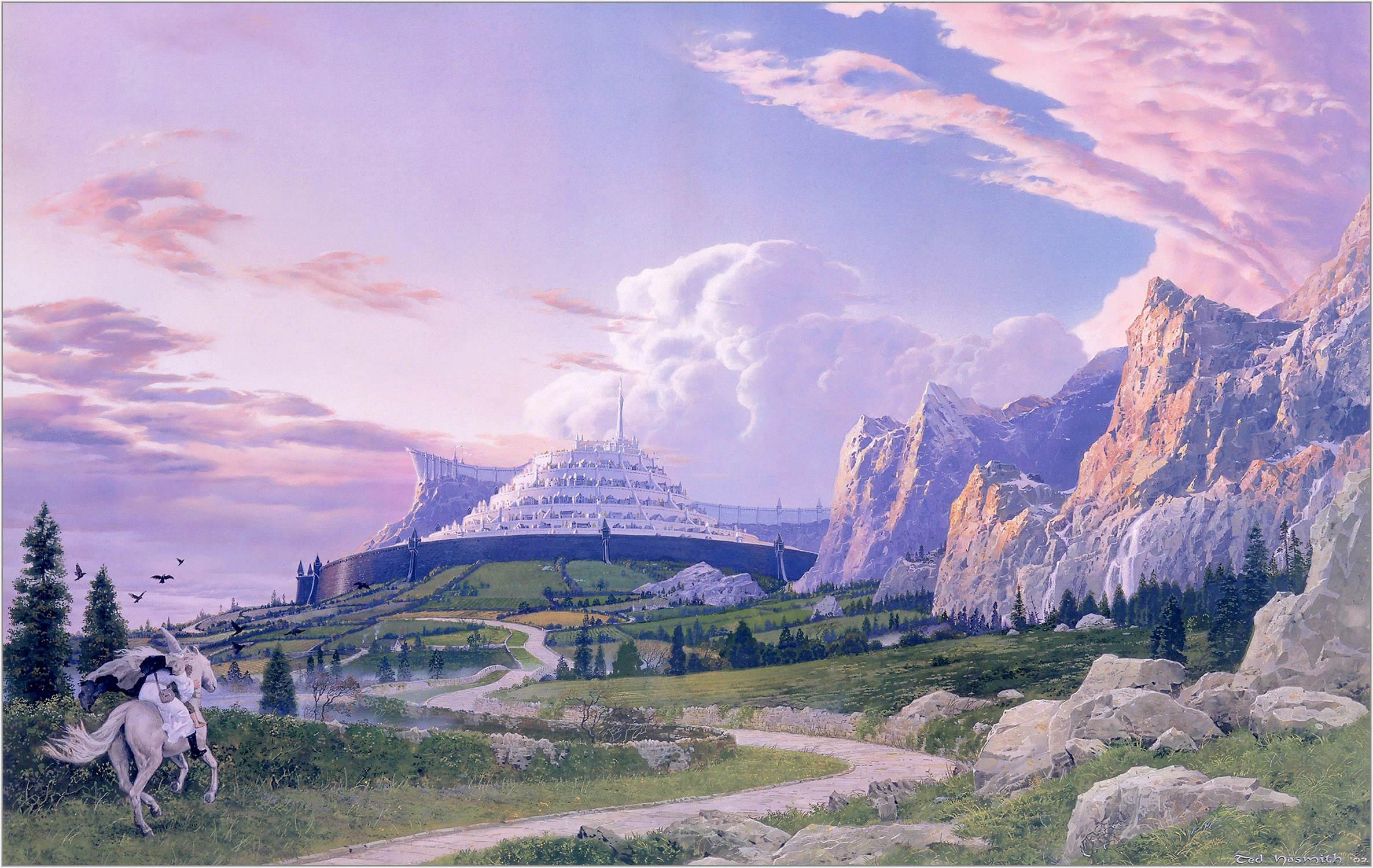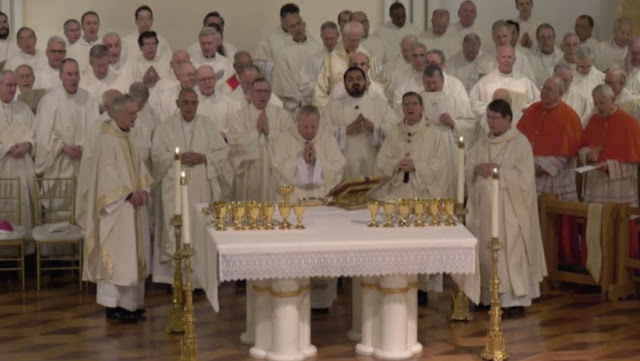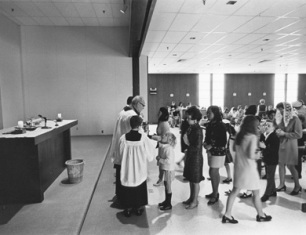 |
“The most brilliant light of the Church ... the most certain rule of Christian doctrine"--S. Pius V
Apotheosis of St. Thomas Aquinas, detail (Francisco Zurbaran) |
Why should a Catholic be confined to the "system" of a single thinker?
Let's set aside for now the question of theological systems and focus instead on the singular approbation and recommendation that St. Thomas has received from the highest earthly authority in the Church, namely various Popes throughout the centuries. For instance, there is this encomium by John
XXII, unfortunately now only remembered for his heretical ideas about admission to the Beatific Vision:
"[St. Thomas's] doctrine could only be miraculous … because he enlightened the Church more than all the other Doctors. By the use of his works a man could profit more in one year than if he studies the doctrine of others for his whole life.”
Benedict XIII was equally forceful in his approval:
"[St. Thomas's] works made the Church illustrious with wonderful erudition, since they march ahead and proceed with unimpeded step, protecting and vindicating by the surest rule of Christian doctrine, the truth of our holy religion."
The Angelic Doctor is singled out, famously, by Leo
XIII, who (as is well known) instituted the full-blown Thomistic revival initiated by Bl. Pius
IX:
“This is the greatest glory of Thomas, altogether his own and shared with no other Catholic Doctor: that the Fathers of Trent, in order to proceed in an orderly fashion during the conclave, desired to have opened upon the altar together with the Scriptures and the decrees of the Supreme Pontiffs, the Summa of St. Thomas Aquinas whence they could draw counsel, reasons and answers."
This list could be extended. No one is arguing, of course, that the theological works of other Doctors are somehow less Catholic or dangerous to the Faith (not to say there aren't troubling tendencies here and there in some of them--I'm looking at you, Scotists!). Rather, everything that may be said of the great lights of Catholic doctrine can be said of St. Thomas but with this addition: namely, that he alone is commended above the others as the surest guide for the explanation and defense of the Catholic Faith.
Furthermore, it's not being argued that St. Thomas is held up in this way because he represents a synthesis of the ancient Fathers and the (then) new Scholastic method: there were many representatives of this effort, not least among them the great St. Bonaventure, the
Doctor Seraphicus. Nor does St. Thomas's distinction rest on his combination of rigorous thought with mystic prayer and great virtue: we could cite St. Bonaventure again, or St. Anselm, or even (at least by antiquity of cult) Bl. Duns Scotus. On the contrary! We are saying that St. Thomas's distinction arises from the singular profundity, rigor, and thoroughness of his thought. It was not for nothing that, when at long last Peter Lombard's
Sentences finally fell out of use as the basic theology textbook, the
Summa Theologica of Aquinas was taken up instead.
Thomism is often misused ...
Before anyone could reasonably be expected to sign off on the proposition that every Rad Trad should aspire to be a Thomist, we should address some of the difficulties surrounding the study (and emulation) of St. Thomas.
First, there is the issue of the misuse of the great
Summa itself. I'm sure we've all observed this here and there in on-line Catholic discussions. Let me use a
recent article. It was written by a very nice lady, with undoubtedly Catholic intent, to give a Catholic perspective on the brouhaha surrounding U.S. immigration policy and border control. She writes in part:
"St. Thomas Aquinas would seem to approach the issue of immigration from a different perspective [different, i.e., from the "perspective" of those shining lights of Catholic theology, Cardinal Wuerl and Bishop Tobin]. In his Summa Theologiae, Aquinas was careful to divide relationships with foreigners into two categories: peaceful, and hostile."
So far, so good. (This is all coming from the
Summa, the I part of the II part, Question 105, article 3. Significantly, the entirety of Question 105 is dedicated to the Law of Moses, and specifically to inquiries concerning the rationale--
ratio--for the judicial precepts of that law.) However, the author then throws this in the mix:
"Among peaceful relationships, [St. Thomas] identified three types of encounter which the Jews might have with foreigners who entered their lands."
Precisely: "the Jews [i.e., the Hebrew nation of old]," not "nations in general." After all, the Saint is here discussing the
reason for the judicial precepts of the Old Law, viz. one of the parts of the Law that passed away with the revelation of the New Law. So, we might draw back a bit when our author concludes her foray into Thomistic thought on immigration with this
sententia:
"Aquinas taught that total integration of immigrants into the life, language, customs and culture was necessary for full citizenship."
Well, maybe he did, and maybe he didn't. We won't know for sure just by looking at this particular article in the
Summa. Aquinas certainly gives a rationale for why the Jews of old regulated immigration and citizenship--he even throws in the custom of
certain pagan nations (using Aristotle as an authority)--but he nowhere expounds on the general principles of immigration and admission to citizenship, not here anyway.
I suspect, but can't prove, that most instances of this clumsy use of the
Summa result from using some on-line version (such as at newadvent.org). What those on-line versions (the best of which is corpusthomisticum.org, by the way) do not provide, however, is a list of the other places in the works of St. Thomas where the same or a similar question is discussed: e.g., in the Commentary on the
Sentences, the
Quaestiones Disputatae or
Quodlibetales, or one of his commentaries on the Gospels or St. Paul.
...unappreciated and misunderstood ...
All of which brings us to the
second issue at play here: Thomism is unappreciated and misunderstood. For one thing, there's a confusion of
terminology: Thomism, Neo-Scholasticism, Neo-Thomism, and maybe others.
Let's clear it up a little, shall we?
Thomism is fairly general; it refers to every theologian (or philosopher) who considers himself as abiding by the principles and theological doctrine contained in St. Thomas's writings. I say it's general because someone like P. Francisco Suarez, S.J., would have considered himself a Thomist--and others sometimes list him as such--but he is less than a faithful follower of all that St. Thomas taught.
Neo-Scholasticism, the Scholastic Revival, or the Thomistic Revival all refer to a conscious effort to revive Scholastic methods (incorporation of authorities, disputation, etc.) and to reintroduce authentic Thomism. (There were other Schools even in the revival, prominently St. Bonaventure, Scotus, and, unfortunately, the Molinists of the Jesuit School.) In some places, this revival was really quite effective and became a living tradition: the pre-Vatican II Lateran University and the "Angelicum," among others.
Neo-Thomism has
nothing to do with the Thomistic Revival, as such. It is, rather, a term used to designate the melding of Thomism with certain, shall we say, more modern trends: Idealism, Hegelianism, Existentialism even. In its milder form, it was espoused by Etienne Gilson and Jacques Maritain. In its less mild forms, it's barely recognizable as Thomism. Sadly, if a casual student decides to study the thought of St. Thomas nowadays, among the more accessible books are those by Maritain and Gilson. Said student is left with the impression that these works present an accurate picture of St. Thomas and that they actually present the principles and methods of Thomistic thought. Sadly, this is not the case.
No, the truth of the matter is that becoming a proficient student of St. Thomas is hard work. Pick up (and proceed to read), if you haven't already, his early work for the use of philosophy students, the
De Ente et Essentia. St. Thomas intended this as a simple, easy-to-understand introduction to certain questions in metaphysics. (I found a handy
English version on-line.) And please, don't just skip over the references to Aristotle or Avicenna: look them up if you can, since Aquinas' students would have at least known the sentence or sentences referred to. Better yet, read over St. Thomas's extensive and (for me, at least) exhausting commentaries on Aristotle (the Physics, the Metaphysics, the Posterior Analytics, etc., etc.). After all, a thorough study of "the Philosopher" was basic to anyone attempting to study the Sacred Page (theology) in St. Thomas' day (up until, oh, about 1965).
Step two: render the entire text into syllogisms. You may use any valid form of the syllogism, but for extra points, you will need to turn each one into the first figure. If you need to brush up on the figures and how they line up one to another, there is a brief overview
here by way of the famous
Barbara, celarent hexameters. It would probably be best to commit the entire "poem" to memory (or recommit it), since even ordinary students of the early and mid-twentieth century were required to render the main arguments (in the
corpus) of the more important articles of the
Summa into syllogisms.
Of course, prior to studying the
Summa, one really should have a reasonable proficiency in Latin, even if only ecclesiastical Latin. (The only really difficult Latin in the
Summa is found in the citations from Seneca regarding generosity. It's probably permissible to crib those from English translations.) After all, in English it gets confusing fast when one talks about
being (noun),
being (verb), and
being (the state thereof). All of this is swept away by the elegant, precise Latin of the Scholastics. It will also be easier to correlate citations from the Scriptures (Vulgate) with the terms used by St. Thomas in one of his arguments; this is much more difficult with English.
... and therefore left untried.
Hopefully, you realize that the above section was written with a good deal of tongue in cheek. The fact of the matter is that it is no easy thing to undertake a study of St. Thomas. It certainly requires the things I've alluded to above and more besides. If anyone looks up "immigration" on the internet, coupling it with "Aquinas" and "Summa," one might get results; one might string a few thoughts together and come up with a conclusion; but the result will most likely be far from reflecting St. Thomas' own thought. A haphazard or lazy approach to something thought out and recorded as the result of so much thought, unremitting work, and single-minded prayer will of course fall far short.
Nemo dat quod non habet, as the old Scholastic dictum has it ("No one gives that which he does not have"): and indeed no one can give himself over to the study of St. Thomas who does not have at least some appreciation of what this study will require.
 |
| An important preliminary to the study of the Angelic Doctor: the elevation of mind and heart to God and the things of God. |
So much for the
pitfalls when reading St. Thomas. How does one use his writings fruitfully, even if unable to devote years to an effort at preparation? (After all, Pope John
XXII seemed to say above that one year dedicated to St.Thomas was better than nothing.) Well, I will tell you, but only in the next installment, since this article has already run on too long.


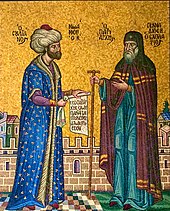




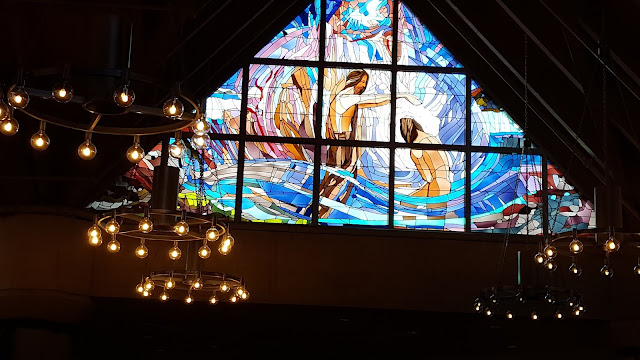

.jpg)
